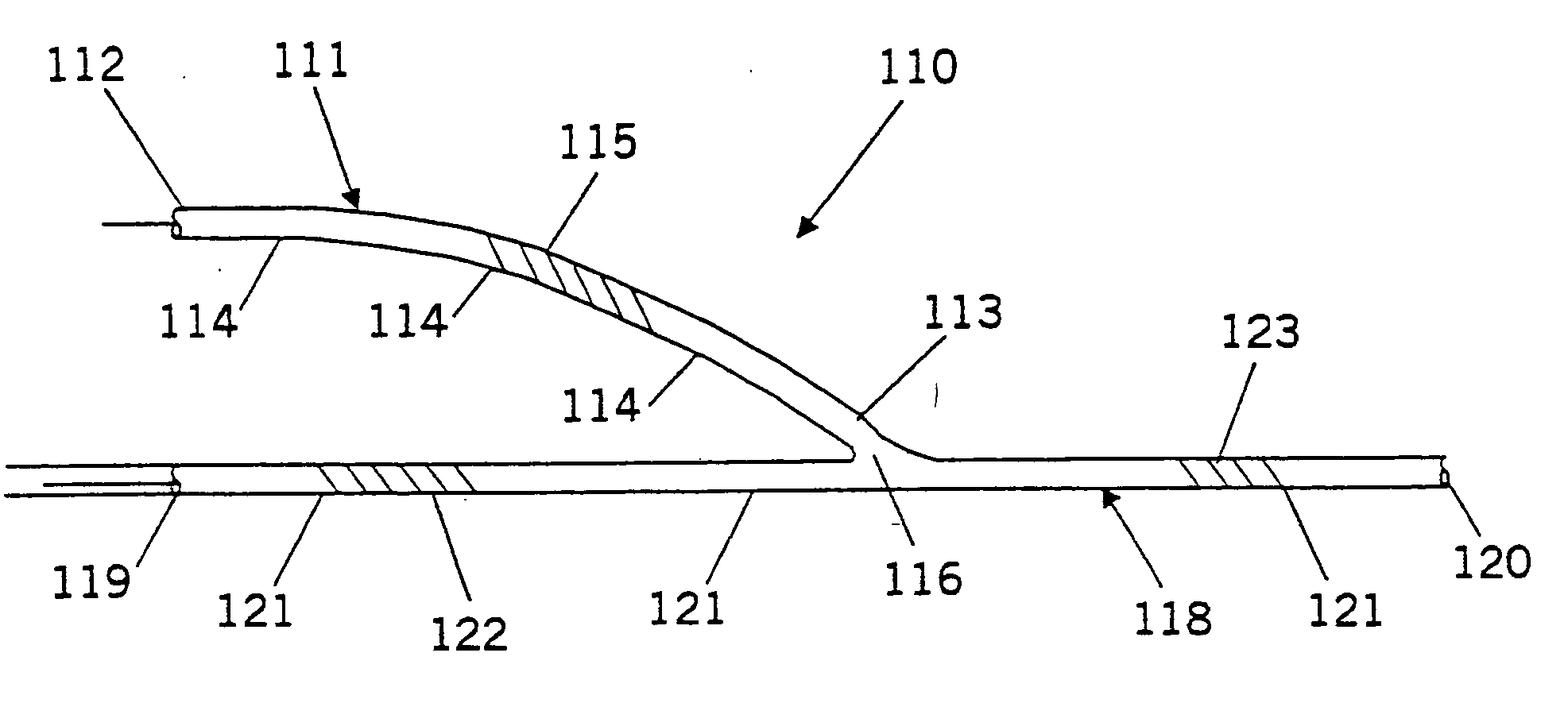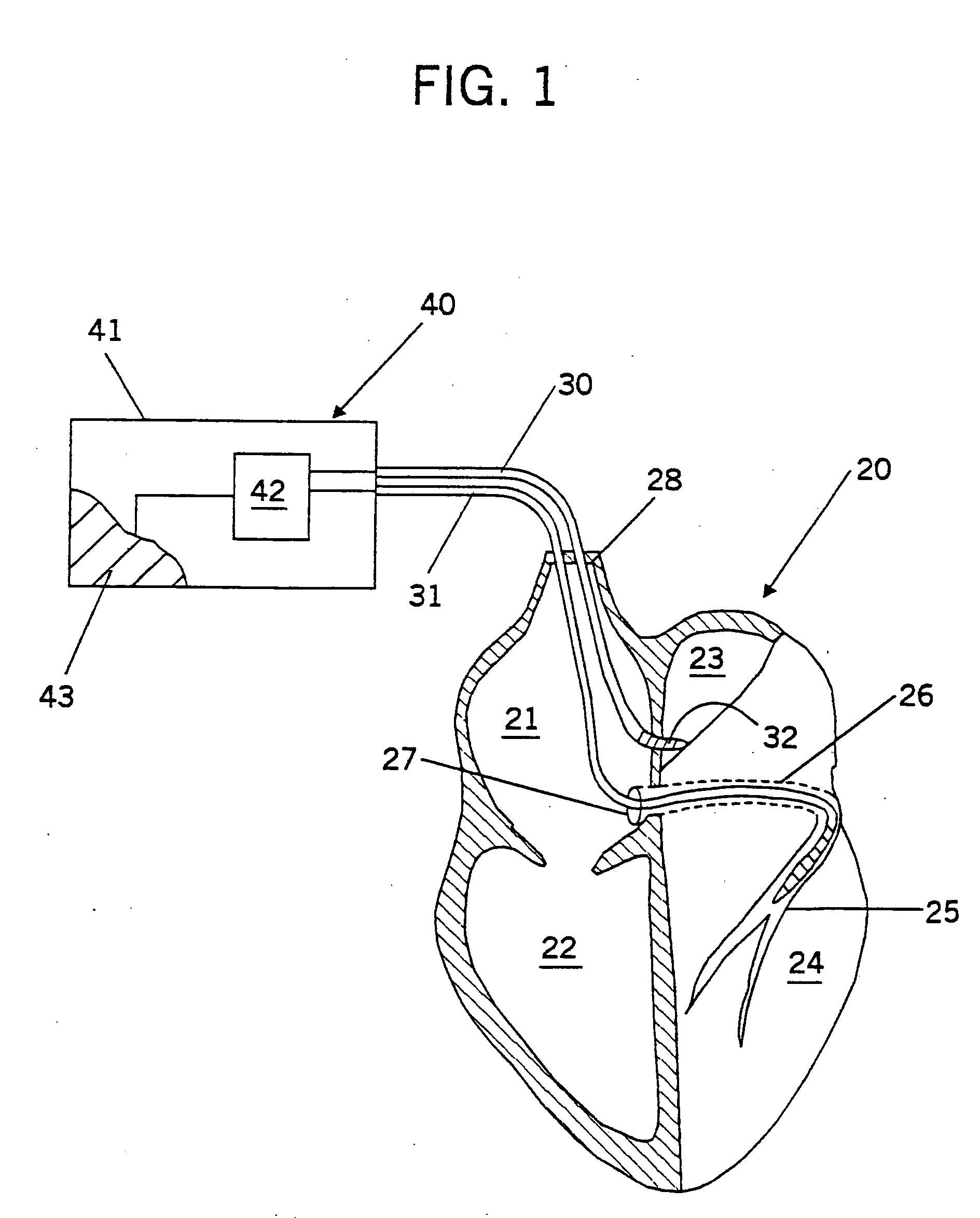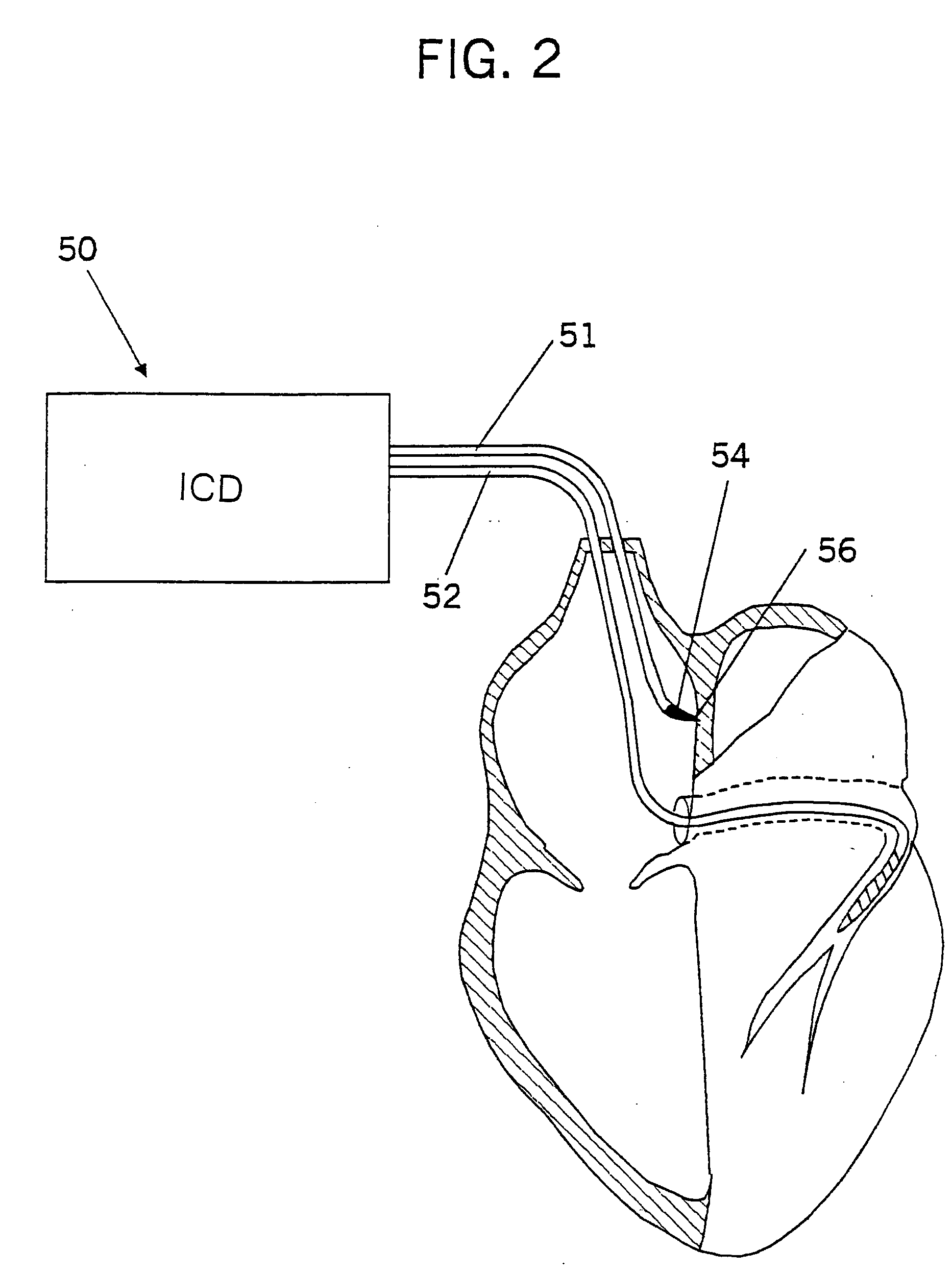Bachmann's bundle electrode for atrial defibrillation
a bundle electrode and atrial defibrillation technology, applied in the direction of internal electrodes, transvascular endocardial electrodes, therapy, etc., can solve the problems of recurrence, low long-term success rate, and significant public health problems
- Summary
- Abstract
- Description
- Claims
- Application Information
AI Technical Summary
Benefits of technology
Problems solved by technology
Method used
Image
Examples
examples
Reduction of Atrial Defibrillation Threshold with an Interatrial Septal Electrode
[0076] This example demonstrates that an electrode configuration with an interatrial septal electrode placed approximately midway between the right atrial appendage and coronary sinus electrodes increases the potential gradient in this region and thus lowers the atrial defibrillation threshold (ADFT).
[0077] I. Methods
[0078] All studies were performed in accordance with the guidelines established in the Position of the American Heart Association on Research Animal Use adopted by the American Heart Association on Nov. 11, 1984.
[0079] Of 11 adult sheep, 8 (41±6 kg, heart mass 217±8 g) completed the experimental protocol; only data from these 8 animals were compiled.
[0080] Animal Preparation. As a preanesthetic agent, a 1-to-1 mixture of tiletamine and zolazepam (8-10 mg / kg) was given intramuscularly. About 10 minutes later, thiopental (2-6 mg / kg) was administered as a slow intravenous bolus. The anima...
PUM
 Login to View More
Login to View More Abstract
Description
Claims
Application Information
 Login to View More
Login to View More - R&D
- Intellectual Property
- Life Sciences
- Materials
- Tech Scout
- Unparalleled Data Quality
- Higher Quality Content
- 60% Fewer Hallucinations
Browse by: Latest US Patents, China's latest patents, Technical Efficacy Thesaurus, Application Domain, Technology Topic, Popular Technical Reports.
© 2025 PatSnap. All rights reserved.Legal|Privacy policy|Modern Slavery Act Transparency Statement|Sitemap|About US| Contact US: help@patsnap.com



